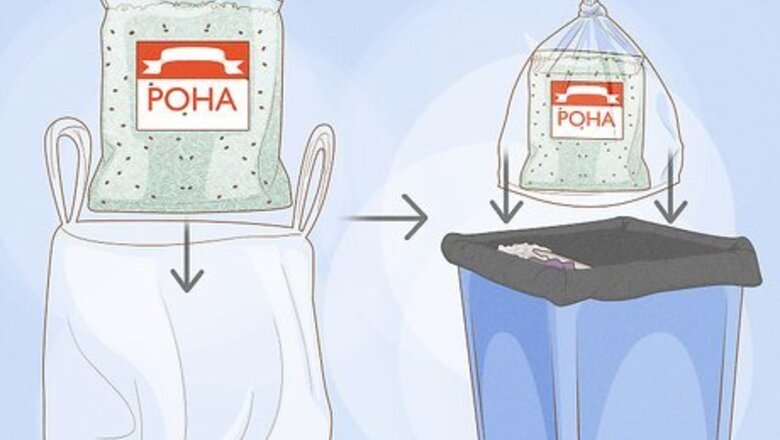
views
- Get rid of drugstore beetles by tossing out food with damaged packaging or beetles inside. Vacuum your shelves to kill drugstore beetles that are hiding.
- Apply insecticides to cracks and crevices in your pantry as a last resort to get rid of tough infestations.
- Heat food to 125 °F (52 °C) for 2–4 hours or freeze food for 6 days to kill drugstore beetles at all stages of their life.
Getting Rid of Drugstore Beetles
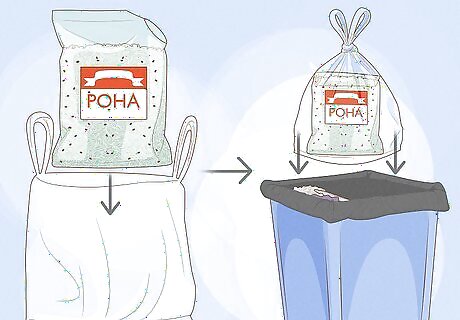
Throw away any products that have beetle infestations. Look through your pantry for any products that have small brown beetles in them. Also, inspect the packaging on flour, dry mixes, bread, cookies, and spices for small holes or webbing. Wrap the products in plastic wrap and throw them away outside. Drugstore beetles may also be found in books, wooden objects, or prescriptions that have been left out. While drugstore beetles aren’t dangerous or harmful, they can give an off flavor to any food they get into.
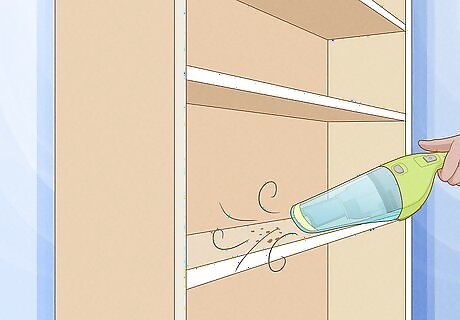
Vacuum the shelves and cupboards. Use the narrow crevice attachment on your vacuum and clean off any residue from the shelves. Be sure to focus on cracks, gaps, and crevices to get rid of drugstore beetles that are hiding. Avoid using water to clean flour or residue off your shelves because it could leave behind a pasty residue that attracts more drugstore beetles.
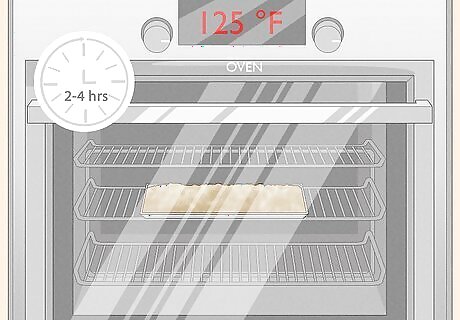
Heat or freeze products to kill drugstore beetles. Turn your oven to 125 °F (52 °C) and place any non-combustible items on the middle rack for 2–4 hours. Alternatively, put the items in your freezer for about 6 days to get rid of drugstore beetles at all stages of their life. You may also try putting your items in the fridge for 16 days as long as it’s at or below 36 °F (2 °C).
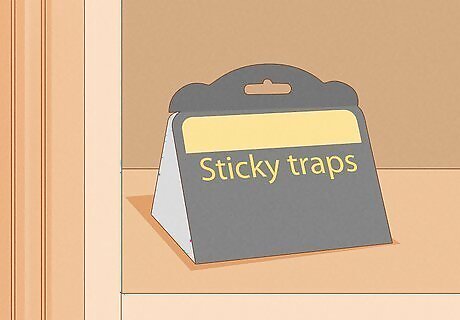
Try putting out sticky traps. Sticky traps are baited with beetle pheromones to attract and kill adult beetles. Set the sticky traps in areas where you’ve seen the beetles to catch and kill them. Throw out and replace the traps once they’re full. Traps are not perfect for getting rid of an infestation, but they can help you catch stray beetles and figure out if there are other problem areas in your home.
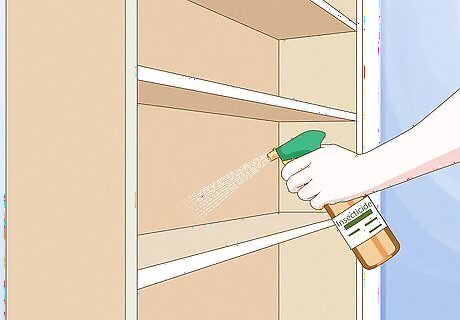
Apply insecticides as a last resort. Stick to insecticides that contain pyrethrins, resmethrin, allethrin, or tetramethrin that are safe to use inside. Remove all the items from the shelves or drawers. Then, apply the insecticides directly to the cracks and crevices around the area. Let the insecticides dry completely before laying down shelf paper and putting your items away. For long-lasting control, try using residual insecticides that contain permethrin, esfenvalerate, cyfluthrin, or bifenthrin instead. Only use insecticides if other non-chemical options aren’t working. If you’re still having trouble getting rid of drugstore beetles, then contact a professional exterminator instead. Avoid applying insecticides directly on surfaces where you store or prepare food because the chemicals could cause contamination.
Preventing a Drugstore Beetle Infestation
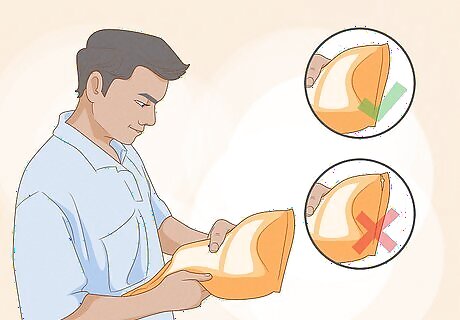
Inspect food for damage or openings before buying it. When you’re buying groceries, make sure the package doesn’t have any openings or rips where beetles could get inside. Check for any holes or webbing around the package, which could also be signs of drugstore beetle grubs. Freeze grain products for 3 days after purchasing them to ensure there aren’t any beetles.
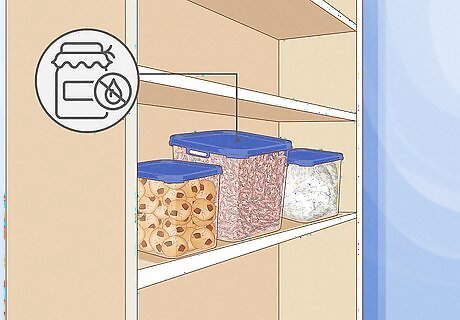
Store your food in airtight containers. Choose plastic, metal, or glass containers that have tight-fitting lids so beetles can’t get inside. Transfer open food to the containers before putting it in your pantry so beetles can’t get in. Airtight containers also help prevent beetles in one food product from getting into other things in your pantry. If possible, get clear containers so you can easily see if there are beetles inside. Store foods you don’t use as frequently, such as pancake mix, flour, and grains, in the fridge or freezer to prevent beetles from getting to them.
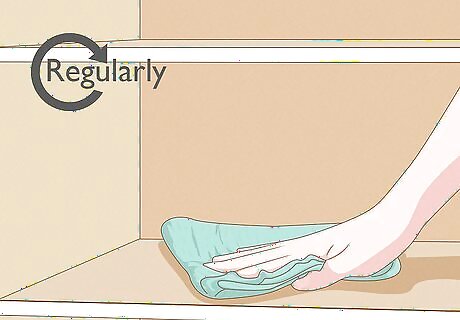
Clean your food storage spaces regularly. Wipe up any crumbs or spills in your pantry as soon as you notice them. Use the narrow crevice attachment on your vacuum to clean corners, cracks, and tight spaces that are harder to reach. For tough residue, wipe the surface with soapy water. Just be sure to dry it off completely so you don’t attract more drugstore beetles.
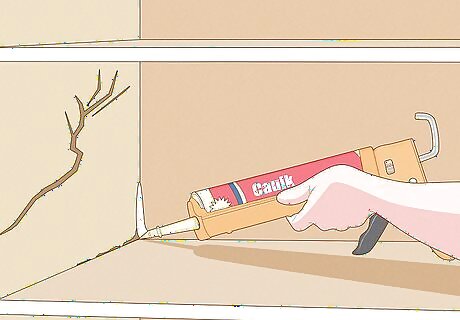
Seal cracks and crevices in your pantry with caulk. If there are small openings or gaps between pantry shelves, apply a bead of caulk to fill them in. That way, spilled food won’t collect in the gap and beetles won’t have a place to hide.
Identifying Drugstore Beetles
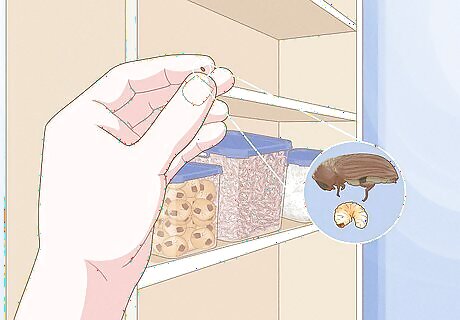
Look for small brown beetles with yellowish hairs. Drugstore beetles are either brown or dark red and have bodies that grow to about ⁄8 inch (3.2 mm) long. They also have small yellowish hairs on their body and rows of lines along their back. Their antennae end in a club shape that has 3 distinct segments. Drugstore beetles can be found worldwide, but are more common in warmer regions. Drugstore beetles lay eggs in grain products or near other food sources. Their larvae are white and C-shaped, but they are as small as ⁄10 inch (2.5 mm) so they’re hard to see with the naked eye.



















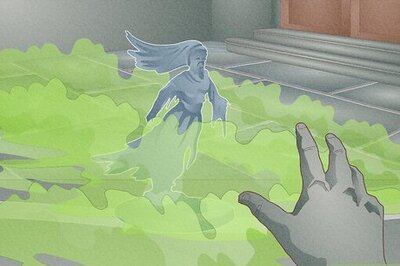
Comments
0 comment